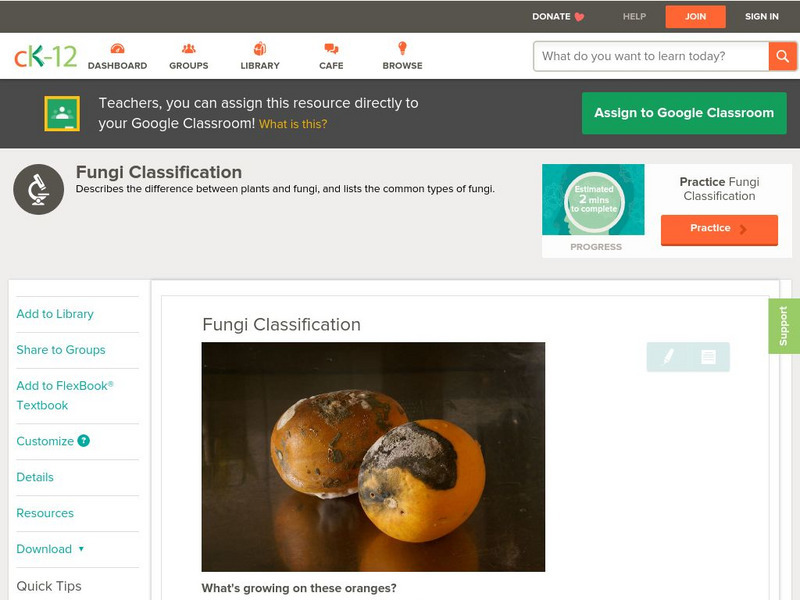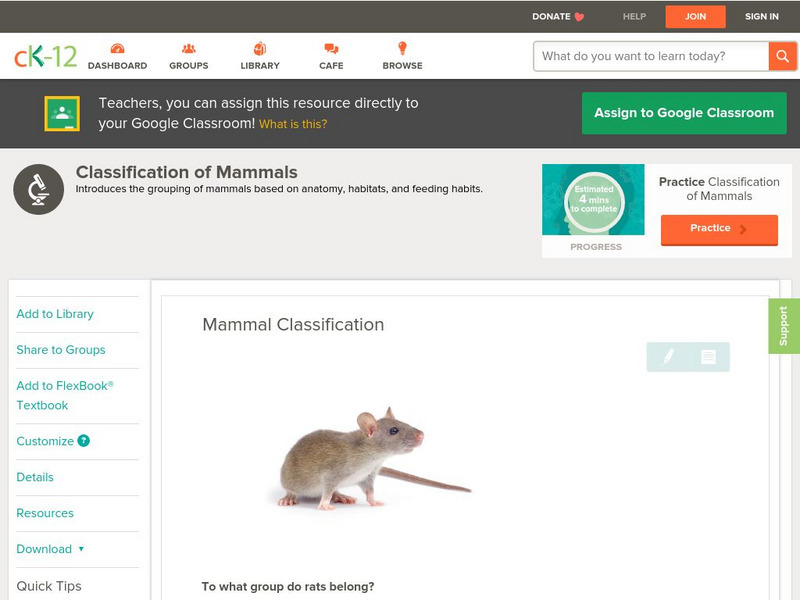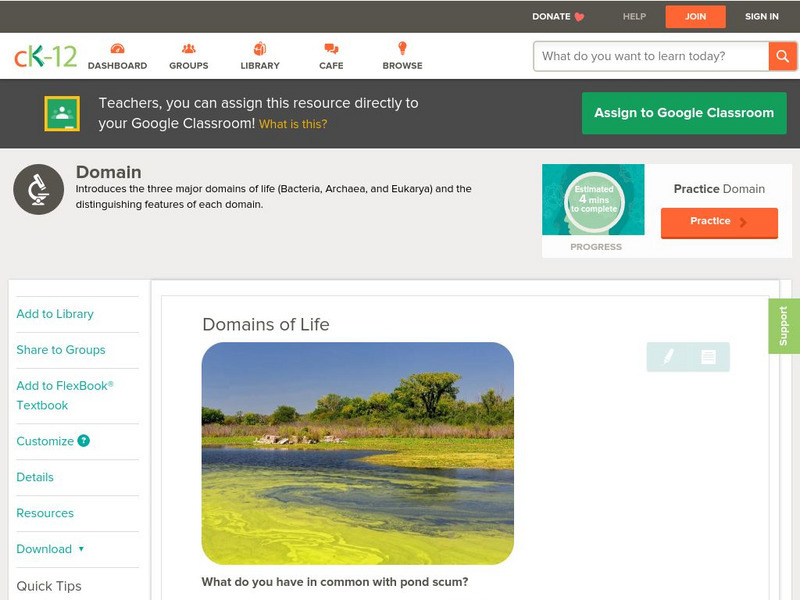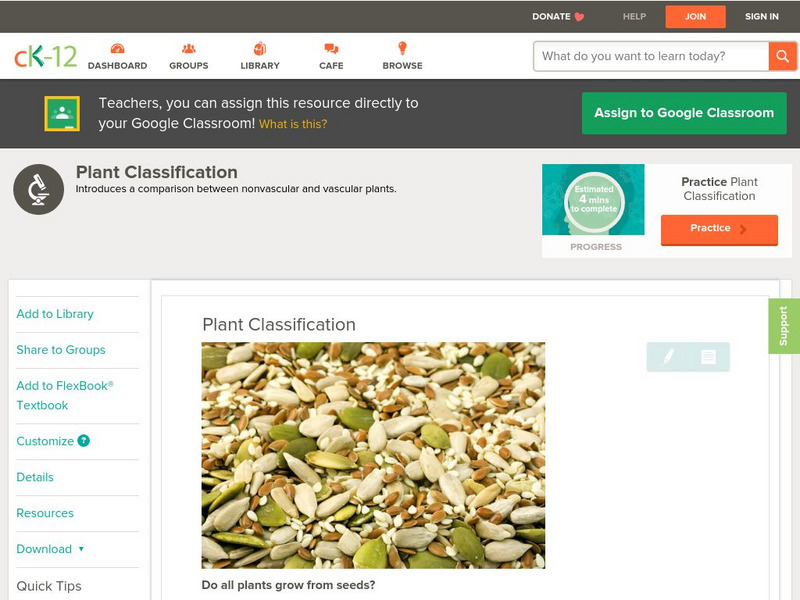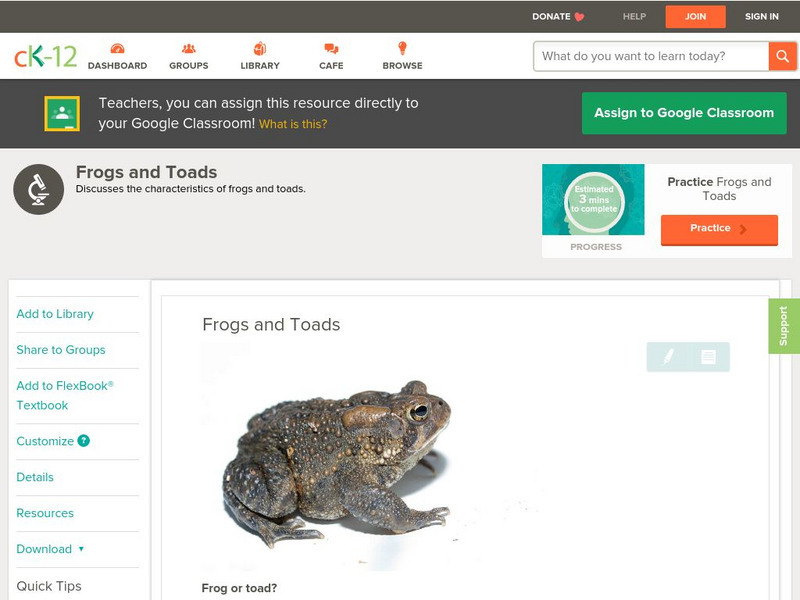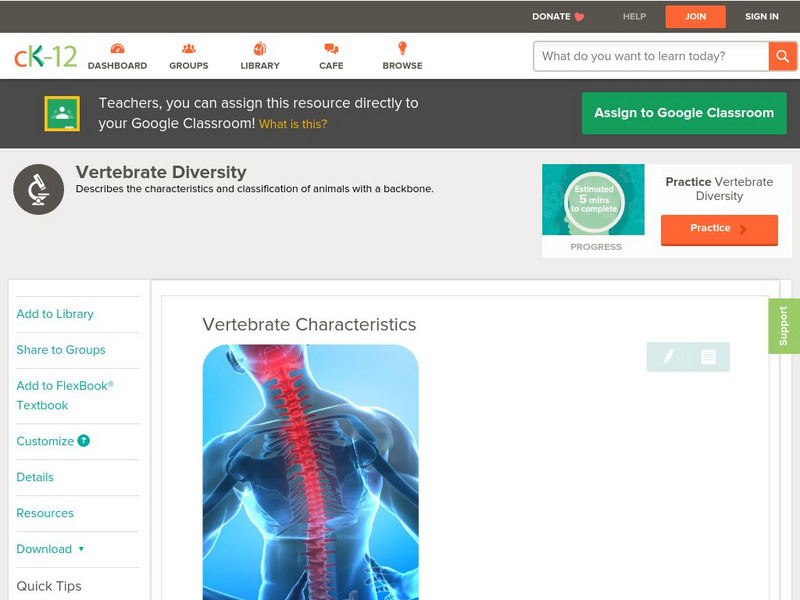CK-12 Foundation
Ck 12: Life Science: 9.3 Cnidarians
Explore the behaviors, characteristics, and classification of cnidarians.
CK-12 Foundation
Ck 12: Life Science: 9.1 Invertebrate Diversity
Understand the biological diversity and classification of invertebrates.
CK-12 Foundation
Ck 12: Life Science: 6.7 Fungi
Explore the characteristics and classification of fungi.
CK-12 Foundation
Ck 12: Life Science: 11.9 Organization of Living Things
Learn the system that scientists use to classify living things.
CK-12 Foundation
Ck 12: Life Science: 10.22 Mammal Classification
Understand how all mammals are divided into groups by similar characteristics.
CK-12 Foundation
Ck 12: Life Science: Fungi Classification
[Free Registration/Login may be required to access all resource tools.] Scientists used to think that fungi were members of the plant kingdom. They thought this because fungi had several similarities to plants. However, there are a...
CK-12 Foundation
Ck 12: Life Science: Mammal Classification
[Free Registration/Login may be required to access all resource tools.] Traditionally, mammals were divided into groups based on their characteristics. Scientists took into consideration their anatomy, their habitats, and their feeding...
CK-12 Foundation
Ck 12: Life Science: Domains of Life
[Free Registration/Login may be required to access all resource tools.] Humans are in the same domain as trees and algae. What could they possibly have in common? It is the location of their DNA inside their cells. Their cells all have a...
Other
It's All About What's Inside. Classification and the Tree of Life [Pdf]
In this science lesson, young scholars look at how animals have traditionally been classified in a tree of life diagram by examining the characteristics of plastic eggs. They then analyze the genetic code assigned for each egg and look...
BBC
Bbc Schools: Ks2 Bitesize: Science: The Living World
This landing page includes learning modules on the following topics of: animals, plants, microorganisms, life cycles and reproductions, food chains, habits, humans and the environment, adaptation, inheritance, and evolution.
University of Michigan
Michigan Sea Grant: Teaching Great Lakes Science: Fish Identification
In this lesson, students examine the physical characteristics of fish that live in the Great Lakes and identify common features that help species to survive in that environment. Downloadable resources include a fish poster, fish family...
CK-12 Foundation
Ck 12: Life Science: Plant Classification
[Free Registration/Login may be required to access all resource tools.] Do all plants grow from seeds? No, there are actually a few plants that do not make seeds. Whether or not a plant makes seeds is one criteria used to classify...
CK-12 Foundation
Ck 12: Life Science: Organization of Living Things
[Free Registration/Login may be required to access all resource tools.] When you see an organism that you have never seen before, you probably put it into a group without even thinking. If it is green and leafy, you probably call it a...
PBS
Pbs Learning Media: Dinosaur Train
Dinosaur Train sparks children's interest in life science and natural history. As they explore a variety of animals, children develop the inquiry skills and knowledge needed to help them think, talk and act like paleontologists. Choose...
Scholastic
Scholastic: Study Jams! Science: Plants: The Kingdoms of Life
A video, a karaoke song to sing along to, and a 7-question multiple-choice quiz on the topic of Kingdoms in the life classification system.
E-learning for Kids
E Learning for Kids: Science: Easter Island: Why Do Young Grow Up to Look Like Their Parents?
Kevin and his grandfather, Omag are going to the zoo. Join them and learn all about animal classification and life cycles.
CK-12 Foundation
Ck 12: Third Grade Science
This customizable digital textbook covers topics related to third-grade science. It is Next Generation Science Standards (NGSS) aligned.
Other
Southwest Tennessee Community College: Classification of Organisms
College-level instructor's notes describing taxonomy. Explanations and images give a chronological history of the science of classifying organisms.
Alabama Learning Exchange
Alex: The Circles of Life
This is an inquiry based cooperative learning unit that can be used in biology as a graduation exam review or in botany for a nine week project. The students will learn the life cycle of mosses, ferns, gymnosperms and angiosperms. The...
Science & Plants for Schools
Science & Plants for Schools: Teaching Resources
A collection of teaching resources to help learners explore plants! Resources investigate anatomy of plants, reproduction and life cycles, fruits, seeds, classification, photosynthesis, factors that affect plant growth, and respiration....
CK-12 Foundation
Ck 12: Life Science: Frogs and Toads
[Free Registration/Login may be required to access all resource tools.] Frogs and toads are amphibians in the order Anura. In terms of classification, there is actually not a big difference between frogs and toads. Learn more about frogs...
CK-12 Foundation
Ck 12: Life Science: Vertebrate Characteristics
[Free Registration/Login may be required to access all resource tools.] Vertebrates are animals with backbones. These include fish, amphibians, reptiles, birds, and mammals. Learn more about vertebrate characteristics in this learning...
CK-12 Foundation
Ck 12: Life Science: Amphibians
[Free Registration/Login may be required to access all resource tools.] Amphibians are a group of vertebrates that have adapted to live in both water and on land. Amphibian larvae are born and live in water, and they breathe using gills....

